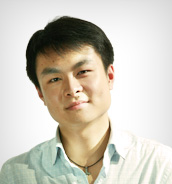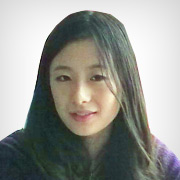Passage Ten (Photography and Art)
The earliest controversies about the relationship between photography and art centered on whether photograph’s fidelity to appearances and dependence on a machine allowed it to be a fine art as distinct from merely a practical art. Throughout the nineteenth century, the defence of photography was identical with the struggle to establish it as a fine art. Against the charge that photography was a soulless, mechanical copying of reality, photographers asserted that it was instead a privileged way of seeing, a revolt against commonplace vision, and no less worthy an art than painting.
Ironically, now that photography is securely established as a fine art, many photographers find it pretentious or irrelevant to label it as such. Serious photographers variously claim to be finding, recording, impartially observing, witnessing events, exploring themselves—anything but making works of art. They are no longer willing to debate whether photography is or is not a fine art, except to proclaim that their own work is not involved with art. It shows the extent to which they simply take for granted the concept of art imposed by the triumph of Modernism: the better the art, the more subversive it is of the traditional aims of art.
Photographers’ disclaimers of any interest in making art tell us more about the harried status of the contemporary notion of art than about whether photography is or is not art. For example, those photographers who suppose that, by taking pictures, they are getting away from the pretensions of art as exemplified by painting remind us of those Abstract Expressionist painters who imagined they were getting away from the intellectual austerity of classical Modernist painting by concentrating on the physical act of painting. Much of photography’s prestige today derives from the convergence of its aims with those of recent art, particularly with the dismissal of abstract art implicit in the phenomenon of Pop painting during the 1960’s. Appreciating photographs is a relief to sensibilities tired of the mental exertions demanded by abstract art. Classical Modernist painting—that is, abstract art as developed in different ways by Picasso, Kandinsky, and Matisse—presupposes highly developed skills of looking and a familiarity with other paintings and the history of art. Photography, like Pop painting, reassures viewers that art is not hard; photography seems to be more about its subjects than about art.
Photography, however, has developed all the anxieties and self-consciousness of a classic Modernist art. Many professionals privately have begun to worry that the promotion of photography as an activity subversive of the traditional pretensions of art has gone so far that the public will forget that photography is a distinctive and exalted activity—in short, an art.
1. What is the author mainly concerned with? The author is concerned with
[A]. defining the Modernist attitude toward art.
[B]. explaining how photography emerged as a fine art.
[C]. explaining the attitude of serious contemporary photographers toward photography as art and placing those attitudes in their historical context.
[D]. defining the various approaches that serious contemporary photographers take toward their art and assessing the value of each of those approaches.
2. Which of the following adjectives best describes “the concept of art imposed by the triumph of Modernism” as the author represents it in lines 12—13?
[A]. Objective [B]. Mechanical. [C]. Superficial. [D]. Paradoxical.
3. Why does the author introduce Abstract Expressionist painter?
[A]. He wants to provide an example of artists who, like serious contemporary photographers, disavowed traditionally accepted aims of modern art.
[B]. He wants to set forth an analogy between the Abstract Expressionist painters and classical Modernist painters.
[C]. He wants to provide a contrast to Pop artist and others.
[D]. He wants to provide an explanation of why serious photography, like other contemporary visual forms, is not and should not pretend to be an art.
4. How did the nineteenth-century defenders of photography stress the photography?
[A]. They stressed photography was a means of making people happy.
[B]. It was art for recording the world.
[C]. It was a device for observing the world impartially.
[D]. It was an art comparable to painting.
相关推荐:
名师解析:标准读音在英语四级考试中的重要性 名师观点:英语四六级考试复习掌握技巧是关键













